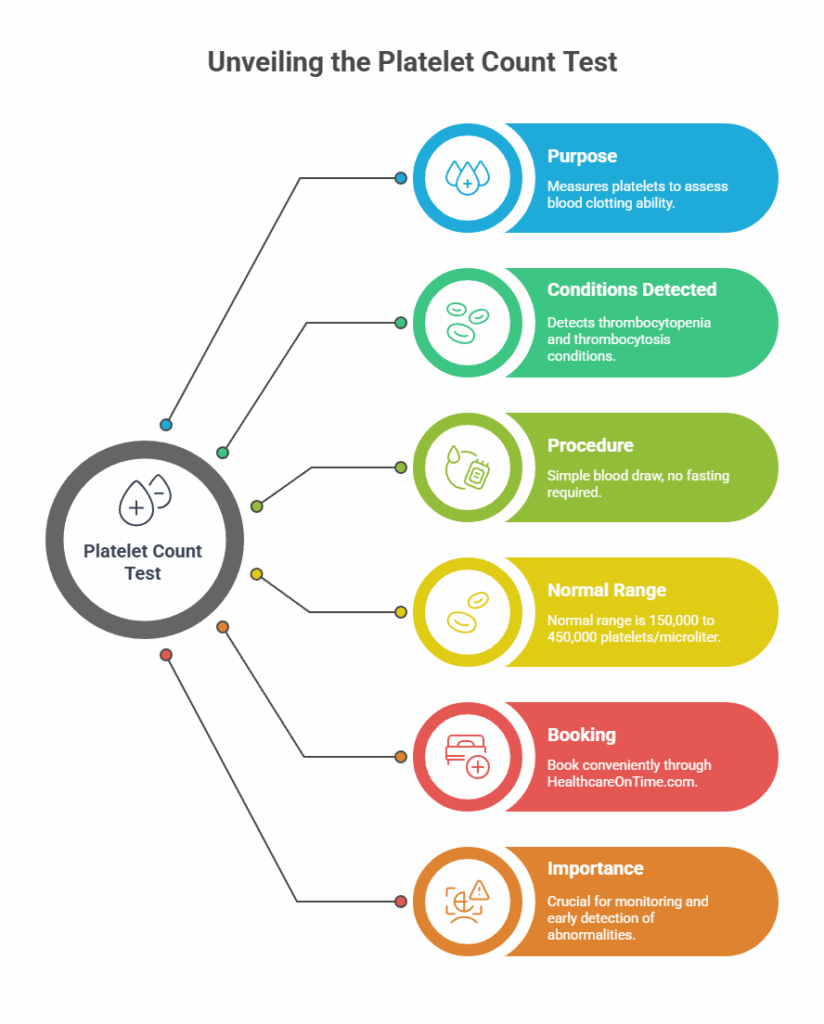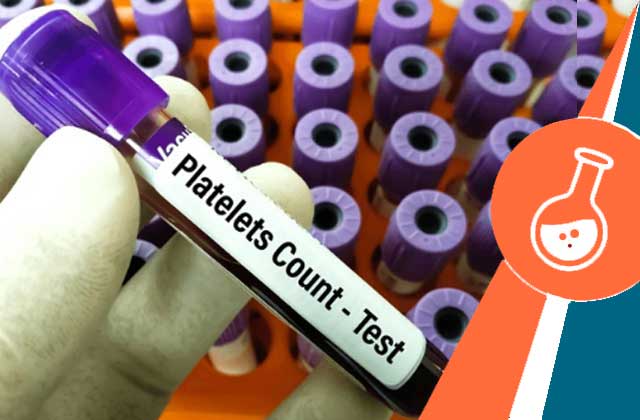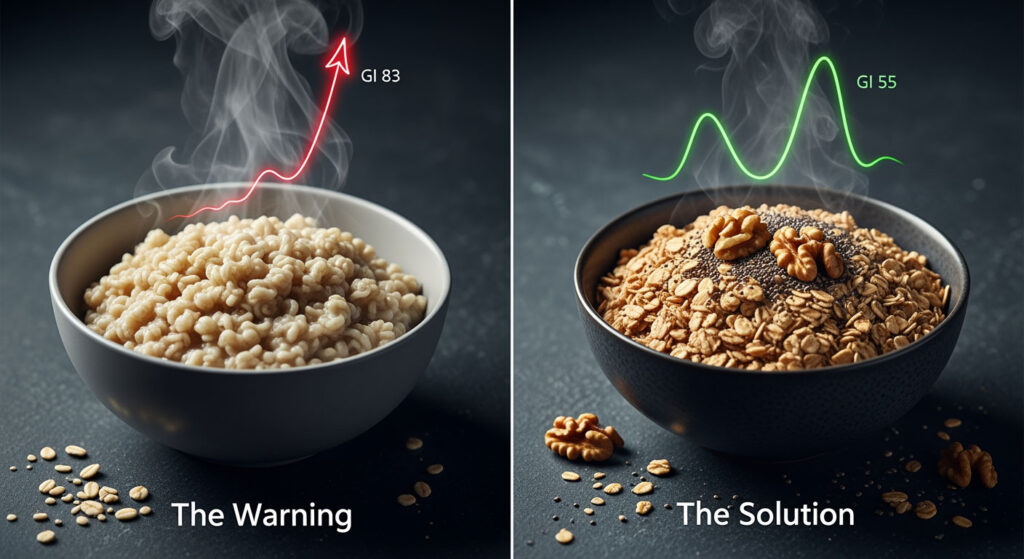
What is a Platelet Count Test?
A platelet count test also know as PLT blood test is a blood test that checks the number of platelets present in your blood. Platelets, also known as thrombocytes mainly help in creating blood clots to stop bleeding. A platelet count blood test can check if you have normal platelet levels.
If you have low platelet levels, it means your body cannot form clots which might lead to excess bleeding in case of injuries. This condition is called thrombocytopenia. High platelet count levels mean the chances of clot formation are higher, which increases the chances of stroke and other fatal conditions. This condition is called thrombocytosis.
About PLT Blood Test
Learn everything about the Platelet Blood Test, before you book lab test online. Understand the why, how, and what of this test.
Why Do Doctors Recommend a Platelet Count Test?
You need a platelet count test to check the normal value of platelets in your body. A PLT blood test is typically important to check the chances of bleeding during surgery or to check if you have an underlying disease, which in turn is affecting the normal platelet levels. In other words, a PLT blood test can help you determine the reason behind excessive bleeding or blood clotting.
- Assess blood clotting ability and detect bleeding disorders.
- Monitor the effects of medications like blood thinners or chemotherapy.
- Identify bone marrow disorders such as leukemia.
- Evaluate infections or inflammatory conditions.
- Assess readiness for surgery.
- Screen for overall health status during master health checkups.
What Does My Platelet Count Indicate About My Health?
A PLT Blood Test checks for the normal platelet count in human body. With the results of a platelet count blood test, you can check if your blood is producing enough or higher platelets and check for underlying diseases.
Symptoms of Low Platelet Levels in the Body
One of the major symptoms of low platelet count is excessive bleeding. However, here are some other symptoms 1 that might indicate the same, and you must take a platelet blood test if you notice them frequently.
- Easy bruising
- Abnormal bleeding, such as nosebleeds, bleeding gums, or heavy periods
- Blood in urine or stool
- Pinpoint bleeding in the skin resembling a purplish-red rash (petechiae)
- Prolonged bleeding from cuts
Symptoms of High platelet levels in the Body
When your platelet count is higher than the normal platelet count, you might come across the following symptoms 2:
- Feeling weak or dizzy
- Shortness of breath and nausea
- Headache and chest pain
- Burning or tingling feeling in your hands and legs
Sometimes, a very high platelet count can also lead to symptoms similar to low platelets. These can include nose bleeding, bruising, and blood in stool. If you notice any of these, it would be best to take a platelet count blood test at the earliest.
How To Prepare For Platelet Count Test?
The steps below help you ensure that your PLT Blood Test provides the most accurate information about your health.
- Fasting requirements: Most people don’t need to do anything to prepare for a platelet count. In some cases, your healthcare provider may want you to fast (not eat or drink) before the test. Be sure to ask your provider if there are any instructions you should follow or medications to avoid before your blood test.
- Medication guidelines: Tell your healthcare provider about all the drugs, supplements or herbal remedies you are taking, as some substances may affect test results. Follow any specific instructions regarding drug adjustment before testing.
- Contact to doctor: Share your entire medical history with existing conditions or any symptoms to help explain test results.
What Happens During Platelet Count Testing?
A PLT Blood Test only takes a few minutes.
- As per the scheduled time of the blood test, a Lab Technician who usually takes blood samples will arrive.
- A thin needle will be used to draw blood from your arm’s vein.
- The needle might cause a mild pinch and some discomfort.
- The lab technician then fills a collection tube with blood and then removes the needle from the skin.
- They place a small bandage on the arm
Please note: There might be slight pain or bruising at the spot of insertion, but most of the symptoms go away quickly.
Finding PLT Blood Test
Should you book blood test online to check your health condition or go to the nearest clinic and get it done by a medical professional? Let’s Find Out
Can I Take a Platelet Count Test At Home?
Yes, the Platelet Count Test can be taken at home. HealthcareOnTime’s at-home lab testing service, in association with thyrocare, provides a convenient and efficient way to get blood testing done from the comfort of your own home without the need for a doctor’s visit or a trip to a lab. It’s important to note that it’s always a good idea to consult with an expert healthcare provider about any queries you may have about your test results.
How Much Does Platelet Count Test Cost?
The platelet count test price varies significantly depending on many factors:
- Location: The platelet count test prices in India may vary depending on the city or the region in which the test is conducted. For example, in Bangalore or Mumbai, it might be expensive as compared to small towns.
- Type of facility centres: The platelet count test cost also varies between private hospitals, government hospitals, and diagnostic centres. Cost is lower in government hospitals as compared to private ones.
- Healthcare centres: Diagnostic centres, laboratories and hospitals may have different platelet count test prices. It depends upon the benefits and reputation of the healthcare centre.
- Insurance Coverage: Individuals with health insurance can cover partial or all costs depending on their policy coverage and network providers.
- Additional services: Additional services such as home sample collection, express test results, or additional charges for special management may be paid, which contributes to the overall platelet count test price.
Generally, the platelet count test cost in India ranges from Rs. 250 to Rs. 800. By opting for HealthcareOnTime lab test at-home facilities, you can access platelet count test at the cost of INR 260.
Test Results Interpretation
You received your platelet count test results but still need help determining if they fall under the normal range. Read this section to know if your results range between the platelet count normal range.
What Does Platelet Count Test Results Mean 6?
Platelet count | Interpretation | Condition |
150,000 to 450,000/mcL | Normal platelet count | NIL |
Less than 150,000/mcL | Low platelet count | Thrombocytopenia |
Above 450,000/mcL | High platelet count | Thrombocytosis |
What Is Platelet Test Normal Range for Male and Female7?
Age | Normal Platelet Count for Male | Normal platelet count for female |
Below 5 | 340,000 | 330,000 |
5-9 | 310,000 | Lesser than but close to 310,000 |
10-14 | 280,000 | More than but close to 280,000 |
15-17 | 250,000 | 270,000 |
18-34 | 240,000 | 265,000 |
35-49 | 245,000 | 270,000 |
50-64 | 230,000 | 260,000 |
65-74 | 220,000 | 250,000 |
75 and above | 215,000 | 240,000 |
It has also been observed that the normal platelet count by age remained more or less constant, with minute fluctuations for females. However, the platelet count for males dropped more with age in comparison to females.
What is Considered a High Platelet Count?
Platelet levels that are higher than 450,000 mcL of blood are considered to be high platelet counts. This condition can increase the chances of clots in blood vessels, leading to various medical conditions like stroke, cardiac arrest, etc.
What is Considered a Low Platelet Count?
Platelet levels lower than 150,000 mcL of blood are considered to be low platelet counts. This condition can cause internal or external bleeding for prolonged periods due to an injury and can often be fatal due to excessive blood loss.
What Medical Conditions Can Cause High Platelet Levels?
The following conditions can cause high platelet levels 8:
- Anemia: Thrombocytosis can be caused by iron-deficiency anemia and hemolytic anemia.
- Cancer: Cancer is a cause of both thrombocytosis and thrombocytopenia. Cancer strains like gastrointestinal, ovarian, and lung cancer can raise your platelet levels.
- Spleen surgery: The spleen is an organ that stores platelets. Removing the spleen can increase the normal blood platelet count in your body.
- Infections and diseases: Diseases like Inflammatory Bowel Disease, tuberculosis, or other tissue infections can also increase platelet count levels.
What Medical Conditions Can Cause Low Platelet Levels?
The following conditions can cause low platelet levels 9:
- Aplastic anemia: This is a condition where the bone marrow doesn’t produce the normal count of blood cells
- Autoimmune diseases: Autoimmune diseases, which include rheumatoid arthritis and immune thrombocytopenia, can trigger your immune system to attack and destroy platelets
- Cancer: Different strains of cancer like leukemia or leukoma can lead to low platelets as these diseases destroy the bone arrow’s ability to produce new blood cells
- Blood clot conditions: Conditions like thrombotic thrombocytopenic purpura (TTP) and disseminated intravascular coagulation (DIC) can deplete platelets.
- Infections: Infections from bacteria and viruses can lead to temporary decreases in platelet count.
- Enlarged spleen: An enlarged spleen may store or remove excessive platelets, leading to low platelet levels.
More Related Tests
Why To Book with HealthCareOnTime

17 Crores+ Samples Processed

World Class Technology Labs

25+ Years of Trust & Experience

Free Home Collection
FAQs Around Platelet Count Test
How much does Platelet count Test cost?
The Platelet count Test cost is Rs.260, although it is now available for Rs.260 because of the offer.












